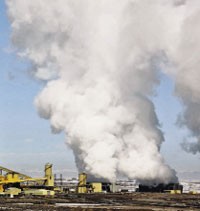Advertisement
Grab your lab coat. Let's get started
Welcome!
Welcome!
Create an account below to get 6 C&EN articles per month, receive newsletters and more - all free.
It seems this is your first time logging in online. Please enter the following information to continue.
As an ACS member you automatically get access to this site. All we need is few more details to create your reading experience.
Not you? Sign in with a different account.
Not you? Sign in with a different account.
ERROR 1
ERROR 1
ERROR 2
ERROR 2
ERROR 2
ERROR 2
ERROR 2
Password and Confirm password must match.
If you have an ACS member number, please enter it here so we can link this account to your membership. (optional)
ERROR 2
ACS values your privacy. By submitting your information, you are gaining access to C&EN and subscribing to our weekly newsletter. We use the information you provide to make your reading experience better, and we will never sell your data to third party members.
Environment
Controversy besets EPA standard for small particulates
October 2, 2006
| A version of this story appeared in
Volume 84, Issue 40
EPA's new air quality standard for fine particulate matter, defined as particles with a diameter of 2.5 µm or less, is generating plenty of controversy. The agency on Sept. 21 retained the existing standard that permits a yearly average for fine particulate matter of 15 µg/m3 of air. EPA also lowered the daily maximum allowable amount of fine particulates to 35 µg/m3 of air, ratcheting down from the 65 µg/m3 standard set in 1997. Health and environmental groups called the new fine particle limits insufficient for protecting the public from adverse cardiovascular effects from breathing in fine particulates. They also blasted the agency for ignoring its science advisers, who recommended that EPA lower the annual standard to between 13 and 14 µg/m3. Business groups, including the American Chemistry Council, opposed a lowering of the daily allowable standard. ACC said EPA's actions will drive up energy prices. Sources of fine particulates include power plants, industrial processes, vehicle exhaust, and forest fires.





Join the conversation
Contact the reporter
Submit a Letter to the Editor for publication
Engage with us on Twitter